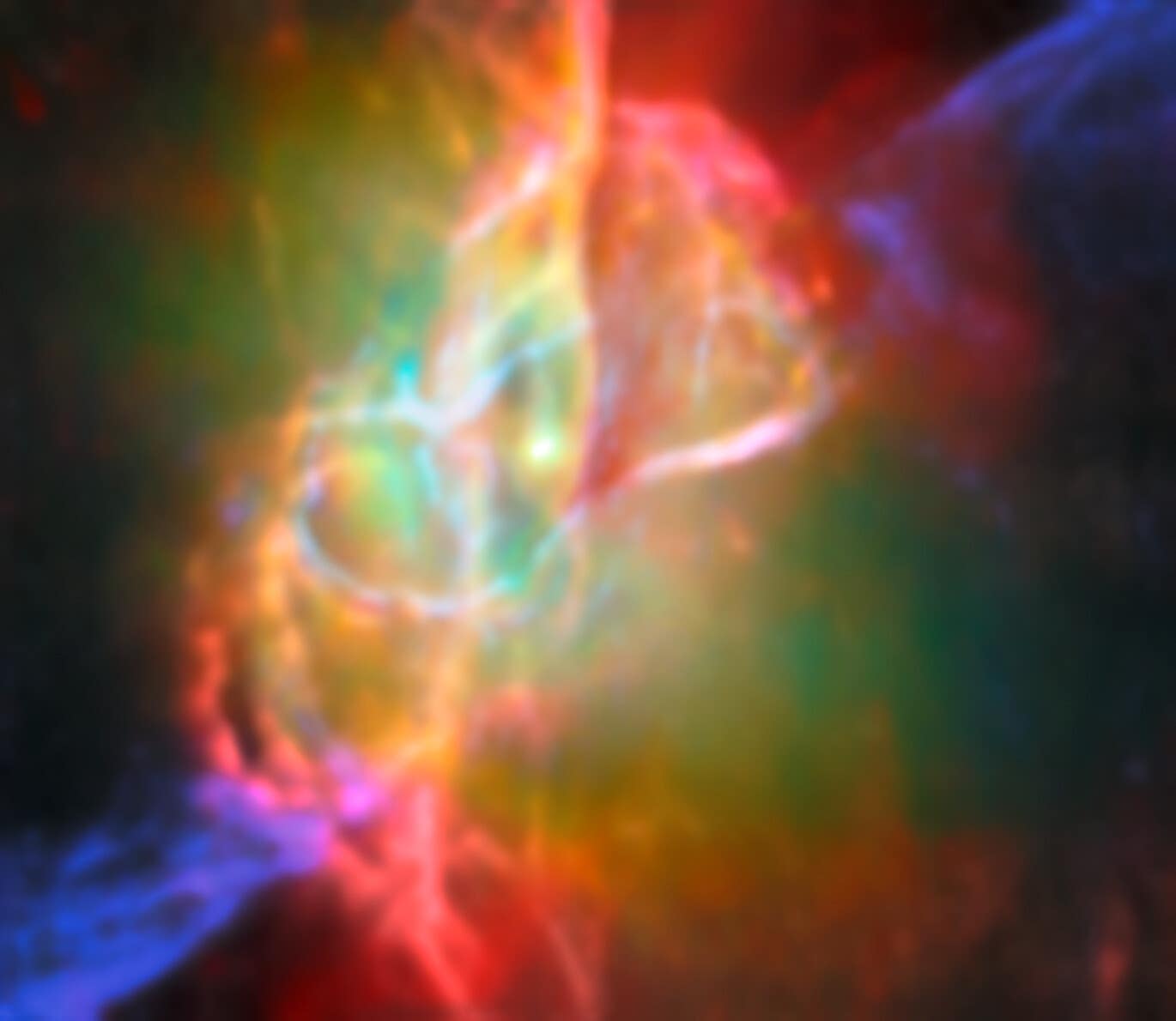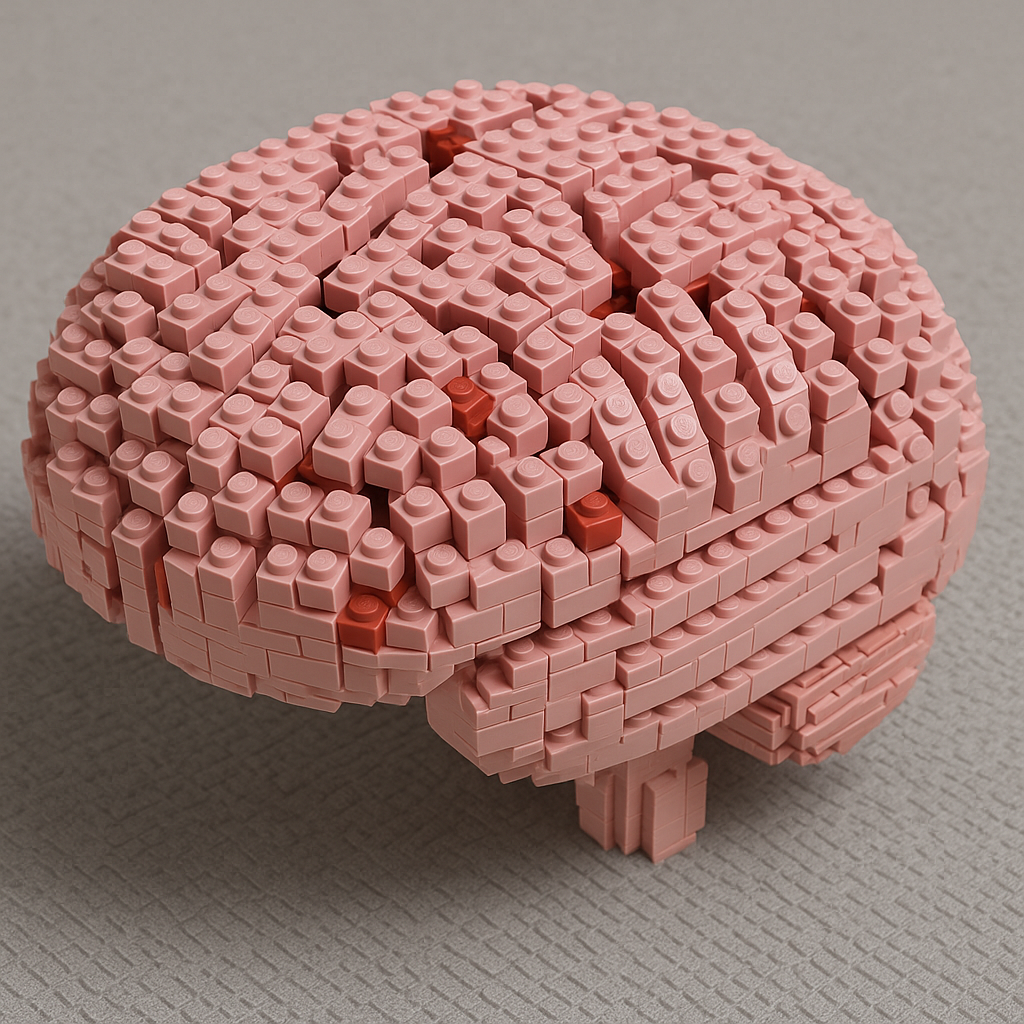Butterfly Nebula’s Hidden Heart Reveals the Building Blocks of Planets
Webb telescope reveals hidden star and planet-building dust in the Butterfly Nebula, offering clues to how rocky worlds form.

The complicated structure at the centre of the Butterfly Nebula, NGC 6302. There is a bright source at the centre that is surrounded by greenish nebulosity and several looping lines in cream, orange and pink. (CREDIT: ESA/Webb, NASA & CSA, M. Matsuura, ALMA (ESO/NAOJ/NRAO), N. Hirano, M. Zamani (ESA/Webb))
At first glance, the Butterfly Nebula looks like a glowing insect pinned against the backdrop of space. Officially known as NGC 6302, it sits about 3,400 light-years away in the constellation Scorpius. Its colorful wings stretch across space, formed from the dying gas and dust of a star not unlike our Sun. For centuries, astronomers have admired its beauty. Now, with the help of the James Webb Space Telescope, you can see its hidden heart in a way never possible before.
The True Nature of a Planetary Nebula
Despite its name, the Butterfly Nebula has nothing to do with planets. The term “planetary nebula” comes from the 18th century, when early astronomers peering through telescopes thought the round glows of these objects resembled planets. In truth, these nebulae form when stars with masses between 0.8 and 8 times the Sun’s shed their outer layers near the end of their lives. The process leaves behind a hot stellar core that bathes the ejected gas in light, creating stunning shapes.
NGC 6302 is among the most dramatic planetary nebulae in our galaxy. Its twin wings sweep outward in opposite directions, while a dark band of dusty gas forms the “body” of the butterfly. That band, actually a doughnut-shaped ring known as a torus, blocks much of the star’s light in visible wavelengths. But infrared light, which Webb specializes in, pierces through the veil.
Piercing the Nebula’s Dusty Core
The Webb telescope’s Mid-Infrared Instrument, or MIRI, was key to this breakthrough. MIRI acts as both a camera and a spectrograph, capturing many wavelengths of light at once. This allowed researchers to build a layered map of the nebula’s structure.
What they found is extraordinary. At the center, the hidden star finally revealed itself. Blazing at a staggering 220,000 Kelvin, it ranks as one of the hottest stars ever observed in a planetary nebula. Its intense radiation makes the surrounding gas and dust glow in intricate patterns.
The torus encircling this star is packed with crystalline silicates—minerals like quartz—and larger, irregular grains. These grains, though only about a millionth of a meter in size, are considered big in the world of cosmic dust. Their presence suggests they’ve been quietly growing in relatively calm areas of the nebula for long periods.
Related Stories
- New study challenges what we know about how Earth's surface evolved
- New scientific discovery reveals the origin of life on Earth
Beyond the torus, the researchers saw layers of glowing material. Atoms and molecules revealed themselves in rings, their positions depending on how much energy was needed to excite them. Energetic ions sat closer to the star, while those requiring less energy appeared farther away. Jets of iron and nickel blasted outward in opposite directions, painting a picture of a star that once unleashed powerful outflows.
Discovering Unexpected Chemistry
One of the biggest surprises came in the form of polycyclic aromatic hydrocarbons, or PAHs. These carbon-based molecules form flat ring structures, like honeycomb patterns. On Earth, you encounter PAHs in smoke from campfires, car exhaust, or even burnt toast.
What makes their presence in the Butterfly Nebula remarkable is that this is an oxygen-rich environment. Typically, PAHs show up in carbon-rich settings. The fact that Webb detected them here suggests something unusual happened. Scientists believe bursts of stellar wind created bubbles that smashed into surrounding gas, giving rise to these molecules.
This may be the first direct evidence of PAHs forming in an oxygen-rich planetary nebula. Because PAHs are tied to organic chemistry and the building blocks of life, their discovery adds an intriguing piece to the puzzle of how complex molecules emerge in space.
A Laboratory for Planet Formation
Dust in the Butterfly Nebula is more than cosmic decoration—it holds clues to how planets like Earth take shape. Most cosmic dust is amorphous, meaning its atoms are arranged randomly, like soot. But in NGC 6302, Webb revealed both amorphous and crystalline dust. Crystalline forms resemble tiny gemstones and are produced under calmer conditions.
Dr. Mikako Matsuura of Cardiff University, lead author of the study published in Monthly Notices of the Royal Astronomical Society, put it this way: “We were able to see both cool gemstones formed in calm, long-lasting zones and fiery grime created in violent, fast-moving parts of space, all within a single object. This discovery is a big step forward in understanding how the basic materials of planets come together.”
That combination—dust grains large enough to serve as seeds for rocky worlds, together with molecules like PAHs—offers a rare view of the raw ingredients of planet formation. For the first time, researchers could map nearly 200 spectral fingerprints, tracing each atom and molecule across the nebula’s structure.
A Fleeting but Crucial Phase
The planetary nebula stage is short, lasting only about 20,000 years—a blink in cosmic terms. That makes studies like this one precious. Each new observation offers a rare snapshot of how stars end their lives while seeding space with fresh dust. Over time, this dust spreads into the galaxy, enriching interstellar clouds from which new stars and planets will form.
The Butterfly Nebula also highlights the complex ways radiation and winds shape stellar environments. Its bipolar wings likely formed because the torus blocked gas from escaping equally in all directions. The result is the stunning butterfly shape we see today.
With Webb’s ability to cut through dust, astronomers now have a front-row seat to these final, dramatic moments in stellar evolution.
Practical Implications of the Research
The study of the Butterfly Nebula provides more than beautiful images. It reveals how dying stars recycle material into space, setting the stage for new planetary systems. Understanding how crystalline dust, irregular grains, and organic molecules like PAHs form gives scientists a better grasp of how planets, including Earth, are built.
This research could also guide future studies of other nebulae, offering a roadmap for how stars shape their surroundings. By linking stellar death with planetary birth, the findings connect two ends of the cosmic cycle.
Over the long run, this work may help uncover how life-supporting molecules arise in the harshest of environments, edging us closer to answering the question of how life itself began.
Note: The article above provided above by The Brighter Side of News.
Like these kind of feel good stories? Get The Brighter Side of News' newsletter.



